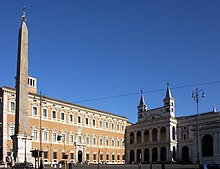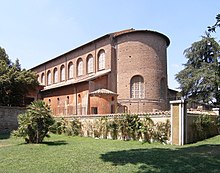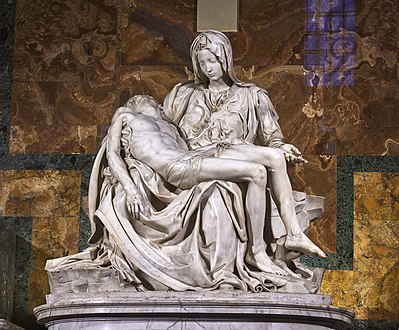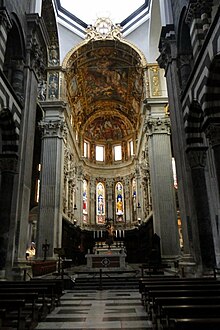*****
禮拜天美術神遊 (12) :紀念Paul Klee ( 1879-1940),讀《克利的日記· 羅馬之旅 1901 》(中文1980 );Bauhaus 百年群英傳 (4)。Casals 1905
https://www.facebook.com/hanching.chung/videos/4045083095502467
Paul Klee: 50 Famous Paintings Analysis and Biography
https://www.paulklee.net
Paul Klee (18 December 1879 - 29 June 1940) was born in Munchenbuchsee, Switzerland, and is considered both a German and a Swiss painter.
Born: 18 December 1879, Munchenbuchsee
Education: Akademie der Bildenden Künste M...
Died: 29 June 1940, Muralto
Paul Klee - 212 artworks - painting - Wikiart
https://www.wikiart.org › paul-klee
Paul Klee's was a Swiss born painter, with a unique style that was influenced by expressionism, cubism, surrealism, and orientalism.
畫家 vs 建築師、音樂家;
The Fountainhead, Frank Lloyd Wright (1867–1959) ,萊特與 歐姬芙 ,Walter Gropius
萊特與 歐姬芙 台中:好讀,2005
小說The Fountainhead (重慶有中譯本)究竟採用Frank Lloyd Wright (1867–1959) 或者Walter Gropius (18 May 1883 – 5 July 1969) 當原型?
Asked for his occupation in a court of law, Frank Lloyd Wright (1867–1959) replied ‘The world’s greatest architect’. His wife remonstrated with him. ‘I had no choice, Olgivanna’, he told her, ‘I was under oath.’

The cocksure Wright was a master of the one-line quip. He told a client who phoned to complain of rain leaking from the roof of her new house onto the dining table where she was sitting to ‘move the chair’. Thinking of Mies, he said, ‘Less is only more where more is no good’. On seeing his tall assistant, William Wesley Peters, inside one of his latest and rather low-ceilinged houses, he barked, ‘Sit down, Wes, you’re ruining the scale of my architecture’. Of himself, this very original American architect bragged, ‘Early in life I had to choose between honest arrogance and hypocritical humility. I chose the former and have seen no reason to change.’
Wright lived a roller-coaster life. He abandoned his first wife, Kitty, and five children and fled to Europe with his mistress and client, Mamah Cheney. On their return to the US, Mamah and her children were murdered at his home, Taliesin, which burned down (and Wright rebuilt) twice. His autobiography, a best seller, was the inspiration for Ayn Rand’s novel The Fountainhead, made into a dramatic film with Gary Cooper in the lead role.

Wright’s architecture could be something of a fairground ride, too. When questioned over the heights of the galleries in his sensational Solomon R. Guggenheim Museum on Fifth Avenue, he said, ‘Cut the paintings in half ’. ‘A doctor’, he joked, more than half-seriously, ‘can bury his mistakes, but an architect can only advise his clients to plant vines.’
Designed as a weekend retreat for the wealthy Pittsburgh store-owners Edgar and Liliane Kaufmann, Fallingwater (1939) was built on an outcrop of rock over a waterfall at Bear Run, Pennsylvania. Its three floors took the form of ambitious 19-metre (62-foot) concrete cantilevers, thrust 5 metres (16 1⁄2 feet) over the fast-falling water from a rock where the Kaufmanns had long enjoyed picnics. This was a dramatic and costly move, yet Fallingwater was a truly beautiful design and the Kaufmanns could well afford the $155,000—a huge sum at the time; the budget had been $30,000—they paid for the house of their dreams.

In 1997, scaffolding was put in place to stop Fallingwater falling down. Four years later, a repair programme was announced. It would cost $11.5 million to right the wrongs of those daring cantilevers. Robert Silman,
***1905
The audience was eager to discover how pianist Brun would fare in the Boccherini sonata. But the Spaniard had left with the words "Ah, cest terrible de jouer avec cet orchestre!" refusing to play another note. Fritz Brun was very glad and rehearsed with him later at home where Casals said he was satisfied. At the concert Casals sat growling in front of the orchestra as it was playing the introductory bars. The conductor turned around dumbly beseeching his opinion of the tempo. The Spaniard endured it for just one beat, and then he joined in with the basses, and with a few taps of his bow on the back of his instrument, brought order to the proceedings. We had to play Mozart's Symphony in G minor, an overture (La Vestale) by Spontini, and the little Cosi Fan Tutte overture, that most wonderful of wonderful works. Besides Boccherini, Casals, as a solo, played a saraband by Bach.
- (especially as a direction) with all voices or instruments together."each strain is first performed tutti, then played by the instruments only"
- performed with all voices or instruments together."the work as a whole is a contrast between solo and tutti sections"
- a passage to be performed with all voices or instruments together.
***
紀念Paul Klee ( 1879-1940),讀《克利的日記· 羅馬之旅 1901 》(中文1980 );Bauhaus 百年群英傳 (4)
https://monoskop.org/images/3/3c/Klee_Paul_The_Diaries_of_Paul_Klee_1898-1918_1964.pdf
Rome captivates the spirit rather than the senses. Genoa is a modern city, Rome a historic one; Rome is epic, Genoa dramatic. That is why it cannot be taken by storm
This is why it can;t be taken by storm.
四間拉斐爾客房(Stanze di Raffaello)是梵蒂岡宮內的一組客房,教宗住所的公共部分。它們以拉斐爾及其工作室創作的壁畫著稱。它們連同西斯廷禮拜堂內米開朗基羅的天頂畫,構成標誌羅馬文藝復興的盛大的壁畫系列。
這些房間最初目的是作為儒略二世的住所。他委託年輕的烏爾比諾藝術家拉斐爾在1508年或1509年完全重新裝修內部。儒略二世的意圖可能是要勝過其前任(也是對手)亞歷山大六世,因為這些房間位於亞歷山大六世居住的波奇亞寓所的正上方。它們位於三樓,俯瞰觀景中庭(Cortile del Belvedere)的南側。
遊客進入這些房間,從東向西,會經過君士坦丁大廳(Sala di Costantino)、伊利奧多羅廳(Stanza di Eliodoro)、簽字廳(Stanza della Segnatura)和博爾戈火災廳(Stanza dell'Incendio del Borgo)。
儒略於1513年去世,已完成兩個房間的壁畫,良十世繼續此工程。拉斐爾在1520年去世後,他的助手吉昂弗朗斯科·班尼、朱利奧·羅馬諾和若弗琳諾·迪·庫里(Raffaellino del Colle)完成康斯坦丁大廳的壁畫。

Die Disputa des allerheiligsten Sakraments (Disputa del Sacramento)


Marcus Aurelius is concentrated art; with Peter faith also has a share. Not that I understand the believers who busy themselves about his foot. But they are there anyway. Who cares about Marcus Aurelius? The primitive stiffness of the bronze of Peter, like a piece of eternity in the whirl of the accidental (October 31st)

As we came to the city limits the Lateran palace diverted us from our project. Also, the mother of all churches next to it. The Byzantine mosaics in the choir, two delicious deer. After this hors d'oeuvre, over to the Christian museum in the Lateran. Sculptures in a naive style whose great beauty stems from the forcefulness of the expression. The effect of these works, which are after all imperfect, cannot be justified on intellectual grounds, and yet I am more receptive to them than to the most highly praised masterpieces. In music too I had already had a few similar experiences. Naturally I am not behaving like a snob. But the Pieta in Saint Peter's left no trace on me, while I can stand spellbound before some old, expressive Christ.
In Michelangelo's frescoes, too, something spiritual exceeds the artistic value. The movement and the hill-like musculature are not pure art, but are also more than pure art. The ability to contemplate pure form I owe to my impressions of architecture: Genoa—San Lorenzo; Pisa—the Duomo. Rome —Saint Peter's. My feeling is often in sharp opposition to Burckhardt's Cicerone. My hatred for the Baroque after Michelangelo might be explained by the fact that I noticed how much I myself had been caught up in the Baroque until now. Despite my recognition that the noble style disappears with the perfection of the means (one sole point of overlapping: Leonardo), I feel drawn back to the noble style, without being convinced that I shall ever get along with it. Boldness and fancy are not called for, now that I should be and want to be an apprentice.
| UNESCO World Heritage Site | |
|---|---|
 The Baptistry in the foreground, the Duomo in the center, and the Campanile in the background on the right |

Sandro Botticelli (1447 — 1510)
S. Stephen in the choir of the
a Cathedral of Prato (best light 10-12;
in winter almost invisible, on ac-
count of the low roof of the choir
— a sort of temporary between-
deck roof of planks, only used in
the wiuter months), would already
have made an epoch in art through
their method and their colouriug.
The scenes are not all loftily con-
ceived ; the artist has too much
that is new to say in all possible
relations for the deeper purpose
not to suffer under the crowd of
often beautiful, purely pictorial
ideas. None of his predecessors
express attitude and motion so
beautifully as he does in his grand
and lifelike draperies, several of
which {e.g., in the Lamentation
over the body of Stephen) hardly
find au equal before the time of
Raphael. In the four Evangelists
in the segments of the ceiling,
Filippo did not adhere to the
symmetrical arrangement ; Fiesole's
Evangelists, for instance, on the
ceiling of the Chapel of Nicolas V.,
will always be preferred.
Tov/ards the end of his life,
Filippo painted the apse of the
b choir of the Cathedral of Spoleto.
This Coronation of the Virgin is
one of the first semi-dome pictures
that is arranged with freedom ; yet
the severe symmetry of the earlier
style is still felt agreeably. The
Virgin and Child are not equal in
earnestness to the Giottesques ;
but there is compensation in the
lifelike expression of accessory
groups. Of the three lower pic-
tures in the hemicycle the Death of
the Virgin is very impressive,
though the result is reached by
quite different methods from those
employed by the Giottesques.
(Fra Diamante took part in both
the great works in fresco. )
In his easel pictures the predomi-
nant sentiment is that of pleasure
iu natural beauty, healthy and play-
ful youth ; the Madonna a figure !
out of Florentine domestic life, the
child Christ always very beautifully
formed. [Remark the peculiar form
of the head often resembling that
of a bull, which gives a stubborn
look to many of his figures, often
even to those of the child-Christ.
— Mr.] At Prato, in the Refectory c
of S. Domenico, a Birth of Christ,
with S. Michael and S. Thomas
Aquinas ; — in the Pinacoteca of the d
Palazzo del Commune, a Madonna
della Cintola, a poor feeble Ma-
donna, and a Predella. At
Florence, in the Academy (Quadri (
grandi, No. 49), a beautiful Ma-
donna with four Saints, all under
an architectural building, the most
beautiful of his easel pictures in
the drapery ;— there also (Quadri
grandi, No. 41) the large Corona-
tion of the Virgin — late, as is shown
by his own portrait as an old man,
and the low toned, but quite clear,
colouring ; it gives an impression
of over-fulness, because the subject,
a Glory, is represented in a definite
earthly spot ; but along with this
it is also rich in essentially new
life ; also the beautiful Pre-
della, Uffizii, No. 1307; two/
angels lift towards the Madonna
the child that longs for her ; she
lingers praying [there also, No.
1167, the wonderful head of an old
man, ascribed to Masaccio, fresco.
—Mr.]. Pal. Pitti, No. 338, large
circular picture of the Madonna (j
seated (half length) ; behind, the
Birth of the Baptist and the Visi-
tation, a subject which naturally
led to the union of the incidents
formerly divided into separate
scenes by gold lines in one picture,
converting the family altar into a
family picture. San Lorenzo, in a //
chapel of the left transept, a fine
Annunciation of the Virgin
(damaged). Pal. Corsini, several i
pictures.
SANDRO BOTTICELLI.
Sandro Botticelli (1447 — 1510) ***294. I have now reached the point where I can look over the great art of antiquity and its Renaissance. But, for myself, I cannot find any artistic con- nection with our own times. And to want to create something outside of one's own age strikes me as suspect. Great perplexity. This is why I am again all on the side of satire. Am I to be completely ab- sorbed by it once more? For the time being it is my only creed. Perhaps I shall never become positive? In any case, I will defend myself like a wild beast. 295. In such circumstances there exist fair means. Prayers for faith and strength. Goethe's Italian Journey Also belongs here. But above all a lucky star. I saw it often. I shall discover it again. One may well draw strength from the pantheistic piety of Goethe. Draw strength to enjoy things, that much is sure
9. Today it was sunny (11.22.1901). We wandered far out, over the Aventine (Basilica Santa Sabina, splendidly primitive, with open wooden roof supports, mosaic pavement) and down to Porta San Paolo. At some distance from it stands another mighty basilica, unfortunately renovated after several fires, cold. 1 campanile 2 central nave 3 side aisles 4 parvis 5-5 facade On the way back we followed the course of the Tiber, or more exactly, went upstream. Just before the last bridge were anchored steamers and sailboats that had been dragged this far. The nearness of the sea.
https://en.wikipedia.org/wiki/Santa_Sabina
Basilica di Santa Sabina all'Aventino (in Italian)
Basilica Sanctae Sabinae (in Latin)

Religion

Interior.

--https://en.wikipedia.org/wiki/Porta_San_Paolo

302. I am working on a composition. At an earlier stage there were many
figures. I called it "Moralizing on Stray Paths." (Stuck calls a picture: "Sin.")
Now the approach is satirical. The figures have been concentrated into three. The way of love. Now I have left out the woman. The problem is simpler and
yet no less demanding. The woman is to be expressed triply in the attitude of
7i / Italian Diary (October 1901 to May 1902)
iff
If/
\*
ft n de/* ?*.*,•££?ts-h'siLtf t/i^fniofa l J/df/s &**-
\frfjf €h// ]/£fl/ Is c t C'fi^/^a, uJ-
^{4 ' LCif i/i^Z* <>cfC°Kw$fr>L? %p*a<?fr
72 / Diary II
the three. I must concentrate on working more intimately, there is not much
ammunition at hand. Then why the big gun?
335. Ancient sculpture at the Vatican. I found myself more mature in my growing admiration for the Apollo Belvedere. I already loved the Muses dearly. No feeling for the Laokoon group (the thorax of one of the boys is said to be uniquely beautiful). New understanding for the Cnidian Venus. Here, in agreement with Burckhardt. Tomorrow I shall go to Spitthofer's and wander through his store. German is spoken there.
| Aphrodite of Knidos | |
|---|---|
| Venus Pudica | |
 The Ludovisi Cnidian Aphrodite, Roman marble copy (torso and thighs) with restored head, arms, legs and drapery support |





沒有留言:
張貼留言